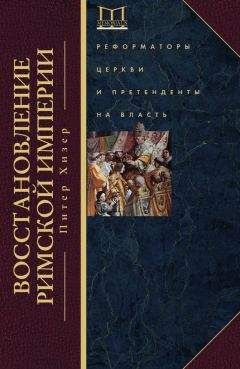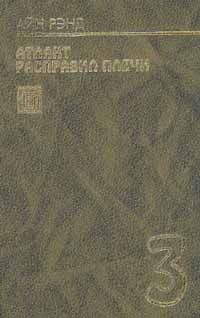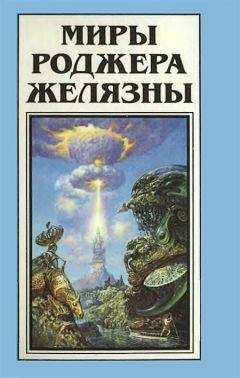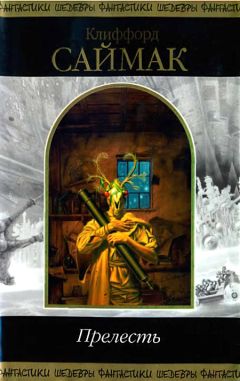Curta, F. (2001). The Making of the Slavs: History and Archaeology of the Lower Danube Region, c. 500–700 (Cambridge).
Dagron, G. (1974). Naissance d’une capitale: Constantinople et ses institutions de 330 à 451 (Paris).
Daim, F. (2003). ‘Avars and Avar Archaeology: An Introduction’, in Goetz et al. (eds) (2003), 463–570.
Davies, W. and Fouracre, P. (1986). The Settlement of Disputes in Early Medieval Europe (Cambridge).
Davis, R. (1992). The Lives of the Eighth-Century Popes (Liber Pontificalis) (Liverpool).
Davis, R. (1995). The Lives of the Ninth-Century Popes (Liber Pontificalis) (Liverpool).
Davis, R. (2000). The Book of Pontiffs (Liber Pontificalis). The ancient Biographies of the First Ninety Roman Bishops to AD 715, 2nd ed. (Liverpool).
d’Avray, D. (2005). Medieval Marriage: Symbolism and Society (Oxford).
De Boor, C. and Wirth, P. (eds) (1992). Theophylacti Simocattae Historiae (Stuttgart).
Deferrari, R. (1952). Early Christian Biographies (Washington DC).
Deferrari, R. (1964). Orosius: Seven Books of History Against the Pagans (Washington DC).
de Jong, M. (2009). The Penitential State: Authority and Atonement in the Age of Louis the Pious, 814–840 (Cambridge).
Depreux, P. (1994). ‘Le Comte Matfrid d’Orléans’, Bibliotheque de l’Ecole des Chartres 152, 331–374.
Dessau, H. (1974). Inscriptiones Latinae Selectae, 4th ed. (Berlin).
Dewing, H. B. (1914–1940). The Works of Procopius (London).
Diggle, J. and Goodyear, F. R. D. (eds) (1970). Corippus Iohannis (Cambridge).
Dignas, B. and Winter, E. (2007). Rome and Persia in late antiquity: neighbours and rivals (Cambridge).
Dindorf, L. (ed.) (1832). Chronicon Paschale (Bonn).
Dodgeon, M. H., and Lieu, S. N. C. (1991). The Roman Eastern Frontier and the Persian Wars (AD 226–363): A Documentary History (London).
Donner, F. M. (2005). ‘The Background to Islam’, in Maas (2005), 510–534.
Dooghe, D.-G. (2002). Le Comté de Flandre et ses origines (Wattignies)
Douglas, D. C. and Greenaway, G. W. (1952). English historical documents, 1042–1189 (London).
Duchesne, L. (1886–1882). Le Liber Pontificalis, Texte, introduction et commentaire, 2 vols (Paris).
Duffy, E. (2005). Stripping of the Altars: Traditional Religion in England 1400–1580, 2nd ed. (New Haven, Conn.).
Duffy, E. (2006). Saints and Sinners: A History of the Popes, 3rd ed. (London).
Dümmler, E. (1877). Liudprandi episcopi Cremonensis Opera omnia (Hanover).
Dümmler, E. (1884). MGH Poetae Latini Aevi Carolini, vol. 2 (Berlin).
Dunbabin, J. (2000). France in the Making 843-1180, 2nd ed. (Oxford).
Dutton, P. (1998). Charlemagne’s Courtier: The Complete Einhard (Peterborough, Ontario).
Dutton, P. (2004). Carolingian Civilization. A Reader (Peterborough, Ontario).
Dvornik, F. (1966). Early Christian and Byzantine Political Philosophy: Origins and Background, The Dumbarton Oaks Center for Byzantine Studies (Washington DC).
Dvornik, F. (1970). Byzantine Missions Among the Slavs: Saints Constantine-Cyril and Methodius (New Brunswick, NJ).
Elton, H. (2007). ‘Cavalry in Late Roman Warfare’, in A. S. Lewin and P. Pellegrini (eds), The Late Roman Army in the Near East from Diocletian to the Arab Conquest (Oxford), 377–382.
Engelbrecht, A. (1891). Fausti Reiensis Praeter sermones pseudoeusebianos opera: accedunt Ruricii Epistulae (Milan).
Evans, J. A. S. (1984). ‘The “Nika” Rebellion and the Empress Theodora’, Byzantion 54, 380–382.
Fletcher, R. A. (1989). The Quest for El Cid (London).
Fontaine, J. (1967). ‘Conversion et Culture chez les Wisigoths d’Espagne’, Settimane di studi sull’Alto medioevo 14, 87-147.
Foss, C. (1977). ‘Archaeology and the Twenty Cities of Byzantine Asia’, American Journal of Archaeology 81, 469–486.
Foss, C. (1990). History and Archaeology of Byzantine Asia Minor (Aldershot).
Foss, C. (1996). Cities, Fortresses and Villages of Byzantine Asia Minor (Aldershot).
Foulke, W. D. (2003). History of the Lombards (Philadelphia).
Fouracre, P. (1986). ‘Placita and the Settlement of Disputes in Later Merovingian Francia’, in Davies and Fouracre (1986), 23–44.
Fouracre, P. (2000) The Age of Charles Martel (Harlow).
Fouracre, P. (2005). ‘The Long Shadow of the Merovingians’, in Story (2005a), 5-21.
Frend, W. H. C. (1972). The Rise of the Monophysite Movement: Chapters in the History of the Church in the Fifth and Sixth Centuries (Cambridge).
Frendo, J. D. (trans.) (1975). Agathias History (Berlin).
Fried, J. (2007). Donation of Constantine and Constitutum Constantini (Berlin).
Fuhrmann, H. (1973). ‘Das Reformpapsttum und die Rechtswis-senschaft’, Vorträge und Forschungen 17, 175–203.
Ganshof, F. L. (1949). La Flandre sous les premiers comtes, 3rd rev. ed. (Brussels).
Ganshof, F. L. (1971). The Carolingians and the Frankish Monarchy (London).
Ganz, D. (1989). ‘The Preconditions for Caroline Minuscule’, Viator 19, 23–44.
Geary, P. (1985). Aristocracy in Provence: The Rhone Basin at the Dawn of the Carolingian Age (Stuttgart).
George, J. (1995). Venantius Fortunatus: Personal and Political Poems (Liverpool).
Gerberding, R. (1987). The Rise of the Carolingians and the Liber Historiae Francorum (Oxford).
Gibbon, E. (1896–1900). The Decline and Fall of the Roman Empire, ed. J. B. Bury (London).
Gibson, M. T. (1975). The Continuity of Learning c. 850 – c. 1050 (Berkeley).
Gibson, M. T. (1981). Boethius: His Life, Thought and Influence (Oxford).
Gilchrist, J. (1973). Diuersorum patrum sententie siue Collectio in LXXIV titulos digesta (Vatican City).
Gilchrist, J. (1980). The Collection in Seventy-Four Titles: A Canon Law Manual of the Gregorian Reform (Toronto).
Gillet A. (ed.) (2002). On Barbarian Identity: Critical Approaches to Ethnicity in the Early Middle Ages (Turnhout).
Godman, P. (1985). Poetry of the Carolingian Renaissance (London).
Godman, P. (1987). Poets and Emperors: Frankish Politics and Carolingian Poetry (Oxford).
Godman, P. and Collins, R. (eds) (1990). Charlemagne’s Heir: New Perspectives on the Reign of Louis the Pious (Oxford).
Goetz, H.-W. et al. (eds) (2003). Regna and Gentes: The Relationship between Late Antique and Early Medieval Peoples and Kingdoms in the Transformation of the Roman World (Leiden).
Goffart, W. (1980). Barbarians and Romans AD 418–584: The Techniques of Accommodation (Princeton).
Goffart, W. (1988). The Narrators of Barbarian History (AD 550–800): Jordanes, Gregory of Tours, Bede, and Paul the Deacon (Princeton).
Goffart. W. (2006). Barbarian Tides: The Migration Age and the Later Roman Empire (Philadelphia).
Goldberg, E. J. (2006). Struggle for Empire: Kingship and Conflict under Louis the German 817–876 (Ithaca).
Gordon, D. C. (1966). The Age of Attila (Ann Arbor).
Goscinny and Uderzo (1963). Astérix et les Goths (Neuilly-sur-Seine).
Gray, P. (1979). The Defence of Chalcedon in the East (Leiden).
Gray, P. (2005). ‘The Legacy of Chalcedon: Christological Problems and Their Significance’, in Maas (2005), 215–238.
Greatrex, G. (1994). ‘The Dates of Procopius’ Works’, Byzantine and Modern Greek Studies 18, 101–114.
Greatrex, G. (1997). ‘The Nika Riot: A Reappraisal’, Journal of Hellenic Studies 117, 60–86.
Greatrex, G. (1998). Rome and Persia at War, 502–532 (Leeds).
Greatrex, G. (2000). ‘Procopius the Outsider?’, in D. S. Smythe (ed.), Strangers to Themselves: The Byzantine Outsider (Burlington, Vt.), 215–218.
Greatrex, G. and Lieu, S. (2002). The Roman Eastern Frontier and the Persian Wars: A Narrative Sourcebook (London).
Grig, L. and Kelly, G. (2012). Two Romes: Rome and Constantinople in Late Antiquity (Oxford Studies in Late Antiquity) (Oxford).
Gundlach, W. (ed.) (1892). Epistolae karolini aevi, MGH Epp. III, Epistolae merowingici et karolini aevi (Hanover).
Gundlach, W. (ed.) (1902). Epistolae aevi merowingici collectae, MGH Epp. III, Epistolae merowingici et karolini aevi (Hanover).
Hageneder, O. (2000). Il sole e la luna: Papato, impero e regni nella teoria e nella prassi dei secoli XII e XIII (Milan).
Hageneder, O. et al., (1965—). Die Register Innocenz III (Graz).
Haldon, J. F. (1990). Byzantium in the Seventh Century: The Transformation of a Culture (Cambridge).
Hallam, E. (1980). Capetian France, 987-1328 (London).
Halsall, G. (2003). Warfare and Society in the Barbarian West, 450–900 (London).
Halsall, G. (2007). Barbarian Migrations and the Roman West 376–568 (Cambridge).
Hanson, R. P. C. (1988). The Search for the Christian Doctrine of God (Edinburgh).
Harries, J. (1999). Law and Empire in Late Antiquity (Cambridge).
Hartel, W. (1882). Magni Felicis Ennodii Opera omnia (Vienna).
Heather, P. J. (1989). ‘Cassiodorus and the Rise of the Amals: Genealogy and the Goths under Hun Domination’, Journal of Roman Studies 79, 103-28.
Heather, P. J. (1991). Goths and Romans 332–489 (Oxford).
Heather, P. J. (1993). ‘The Historical Culture of Ostrogothic Italy’, in Teoderico il grande e i Goti d’Italia, Atti del XIII Congresso internazionale di studi sull’Alto Medioevo (Spoleto), 317–353.
Heather, P. J. (1994a). ‘Literacy and Power in the Migration Period’, in A. Bowman and G. Woolf (eds) (1994), Literacy and Power in the Ancient World (Cambridge), 177–197.
Heather, P. J. (1994b). ‘New Men for New Constantines?: Creating an Imperial Elite in the Eastern Mediterranean’, in P. Magdalino (ed.), New Constantines: The Rhythm of Imperial Renewal in Byzantium, 4th-13th Centuries (London), 11–33.
Heather, P. J. (1995). ‘Theodoric King of the Goths’, Early Medieval Europe 4.2, 145–173.
Heather, P. J. (1996). The Goths (Oxford).
Heather, P. J. (2000). ‘State, Lordship and Community in the West (c. AD 400–600)’, in Averil Cameron et al. (2000), 437-68.
Heather, P. (2003). ‘Gens and regnum Among the Ostrogoths’, in Goetz et al. (eds), 85-133.
Heather, P. (2005). The Fall of Rome: A New History (London).
Heather P. (2007). ‘Goths in the Roman Balkans c.350–500, in A. Poulter (ed.), The Transition to Late Antiquity on the Danube and Beyond (Oxford), 163–190.
Heather, P. (2008). ‘Ethnicity, Group Identity, and Social Status in the Migration Period’, in I. Garipzanov et al. (eds), Franks, Northmen, and Slavs: Identities and State Formation in Early Medieval Europe (Turnhout), 17–50.
Heather, P. (2009). Empires and Barbarians (London).
Heather, P. (2010). ‘Elite Militarisation and the Post-Roman West’, in G. Bonamente and R. Lizzi Testa (eds), Istituzioni, Carisimi et Esercizio del Potere (IV–VI secolo D.C.) (Bari), 245–266.
Heather, P. (ed.) (1999). The Visigoths from the Migration Period to the Seventh Century: An Ethnographic Perspective (Woodbridge).
Heather, P. J. and Matthews, J. F. (1991). The Goths in the Fourth Century, Translated Texts for Historians (Liverpool).
Heather, P. J. and Moncur, D. (2001). Politics, Philosophy, and Empire in the Fourth Century: Select Orations of Themistius, Translated Texts for Historians (Liverpool).
Heinichen, F. A. (1868–1870). Eusebii Pamphili Scripta Historica (Leipzig).
Hendy, M. F. (1985). Studies in the Byzantine Monetary Economy, c. 300-1450 (Cambridge).
Herrin, J. (1987). The Formation of Christendom (Oxford).
Herrmann, K. J. (1973). Das Tuskulanerpapsttum (1012–1046): Benedikt VIII., Johannes XIX., Benedikt IX. (Stuttgart).
Hillgarth, J. N. (1966). ‘Coins and Chronicles: Propaganda in Sixth Century Spain’, Historia 16, 482–508.
Hill, S. (1996). The Early Byzantine Churches of Cilicia and Isauria (Birmingham).
Hodgkin, T. (1886). The Letters of Cassiodorus (London).
Holum, K. (2005). ‘The Classical City in the Sixth Century: Survival and Transformation’, in Maas (2005), 87-112.
Honoré, A. M., (1978). Tribonian (London).
Honoré, A. (1994). Emperors and Lawyers, 2nd rev. ed. (Oxford).
Hooke, D. (1998). The Landscape of Anglo-Saxon England (London).
Horden, P. (2005). ‘Mediterranean Plague in the Age of Justinian’, in Maas (2005), 134–160.
Howard Johnston, J. (2010). Witnesses to a World Crisis: Historians and Histories of the Middle East in the Seventh Century (Oxford).
Howard Johnston, J. et al. (eds) (1999). The Cult of Saints in Late Antiquity and the Middle Ages: Essays on the Contribution of Peter Brown (Oxford).
Humfress, C. (2007). Orthodoxy and the Courts in Late Antiquity (Oxford).
James, E. F. (1988). The Franks (Oxford).
Jarnut, J. (1982). Geschichte der Langobarden (Stuttgart).
Jasper, D. and Fuhrmann, H. (2001). Papal Letters in the Early Middle Ages (Washington DC).




